Pet poisonings are one of the most common reasons for veterinary emergency visits. The ASPCA Animal Poison Control center receives hundreds of calls each day about pets who have ingested potentially toxic items, and some of these pets suffer serious medical consequences. While most toxins cause organ damage or acute illness, your pet’s eyes can sometimes also be affected.
March is dedicated to bringing awareness to pet poisonings, and the Envision More Veterinary Ophthalmology team wants to help by ensuring pet owners are aware of the most common pet toxins. Here are the top five toxins, how they could harm your pet, and how to avoid them.
#1: Rodenticide poisoning in pets
Home and land owners commonly use rodenticides (i.e., rat poison) to control unwanted rodent populations, but these taste-pleasing poisons attract not only rodents, but also pets. Older generation rodenticides cause blood clotting problems, which can lead to mysterious bruising and pinpoint bleeding in the skin or mucous membranes, along with internal bleeding. The first rodenticide poisoning signs are sometimes eye-related, including conjunctival hemorrhage, pain behind the eyes, and bulging eyes.
While anticoagulant rodenticide poisoning can be easily treated when quickly recognized, newer poison ingredients are more difficult to counteract and may cause serious electrolyte disturbances, neurologic damage, or heart failure, and require extensive hospitalization and care. Avoiding these products entirely and keeping your pet on-leash in unfamiliar areas are the best ways to protect your pet.
#2: Chocolate poisoning in pets
Theobromine and caffeine are toxic chocolate components that act as stimulants and cause hyperactivity, vomiting, diarrhea, tremors, seizures, coma, or death. The darker the chocolate, the more toxin, and the more deadly for your pet. Pet size, overall health status, and the amount of chocolate eaten also influence your pet’s reaction. Effects can be mild in a young, healthy, large dog who eats only a few bites of milk chocolate, but severe in a small pet who eats cocoa powder or baker’s chocolate.
Treating chocolate toxicity usually requires a visit to the veterinarian, and hospitalization in moderate or severe cases. Never leave chocolate unattended in areas that pets can reach, intentionally feed your pet chocolate, or allow children to have chocolate in their bedrooms that your pet could find.
#3: Toxic plant ingestion in pets
Unfortunately, many beautiful plants and flowers are toxic to pets when chewed or eaten, and may cause drooling, vomiting, diarrhea, or more severe effects, such as seizures or organ damage. Lilies are particularly toxic to cats, who can experience rapid and life-threatening kidney failure after ingestion or any contact with a plant surface. Azaleas, tulips, oleander, and many others are also dangerous. Check the ASPCA list of toxic and non-toxic plants to learn which are safe to keep in or around your home.
#4: Medication poisoning in pets
While veterinarians commonly prescribe human medications for pet use, never assume that a particular medication is safe for your pet. Many are toxic, and often lead to kidney failure, liver failure, stomach ulcers, or nervous system damage. Common culprits include:
- Over-the-counter (OTC) medications — NSAIDs, Tylenol, cold medication, supplements
- Prescription medications — ADHD, cardiac, and psychiatric medications
- Pet medications — Flavored, chewable medications, such as those used for parasite prevention, antibiotic therapy, or pain relief, which are toxic if your pet consumes a large quantity at once
Always store medications in high cabinets or secure drawers, keep bags and purses off the floor, and never give medications without your veterinarian’s approval.
#5: Other pet-toxic foods and ingredients
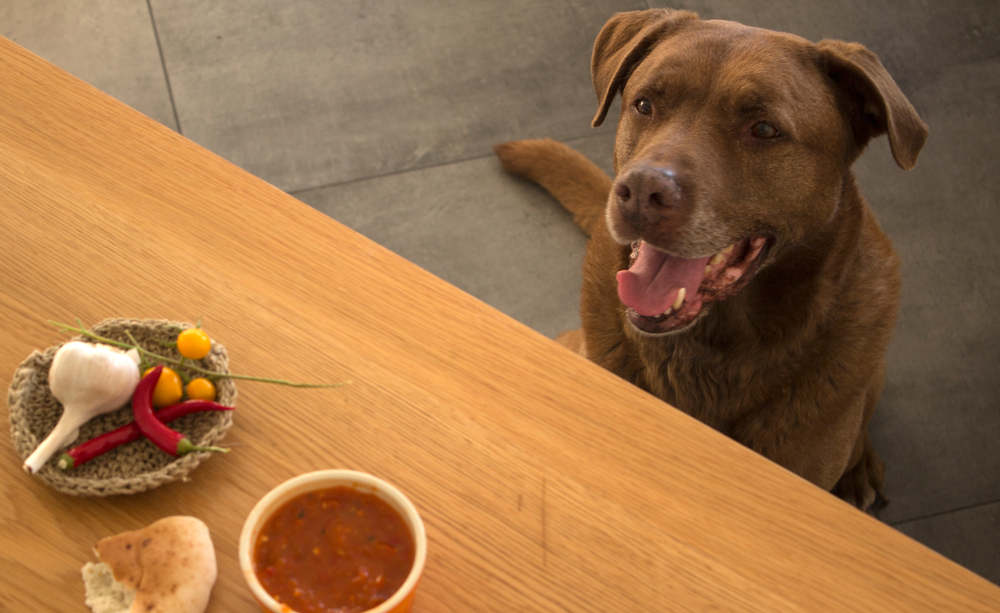
Chocolate isn’t the only harmful food for pets. Others common toxins include:
- Onions and garlic — Plants in this family contain sulfur compounds that damage your pet’s red blood cells.
- Grapes and raisins — These likely contain tartaric acid, which can cause kidney failure in some pets after eating.
- Macadamia nuts — An unknown toxin in macadamia nuts can lead to neurologic signs in pets.
- Xylitol — This artificial sweetener, which is found in many sugar-free candies, gum, and baked goods, can cause an extreme blood sugar crash and liver failure.
- Marijuana — THC-containing food products are dangerous for pets, causing extreme intoxication that often requires hospitalization.
Many other household products, including cleaning supplies, paint, glue, fertilizer, insecticides, and antifreeze, are also dangerous if your pet consumes or comes into contact with them. Always read product labels, follow instructions, keep pets away from dangerous products while they are in use, and store them securely where pets cannot access them.
If your pet ingests an item that could be toxic or dangerous, contact the ASPCA Animal Poison Control Center or the Pet Poison Helpline for assistance and direction. These fee-based services provide detailed advice, and let you know if your pet needs immediate medical care from your primary veterinarian or local emergency facility.
Changes to your pet’s eye health can often indicate a systemic problem, and should be addressed by the Envision More Veterinary Ophthalmology team or your primary veterinarian as soon as possible. Contact us to schedule a visit, or to learn more about our services.


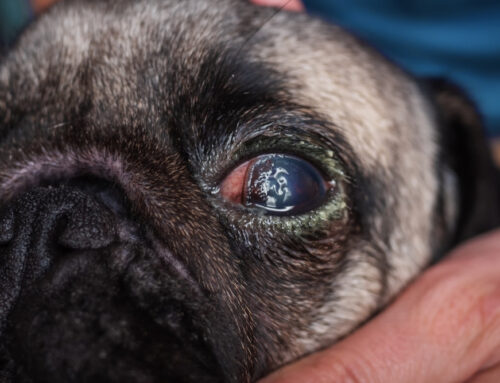
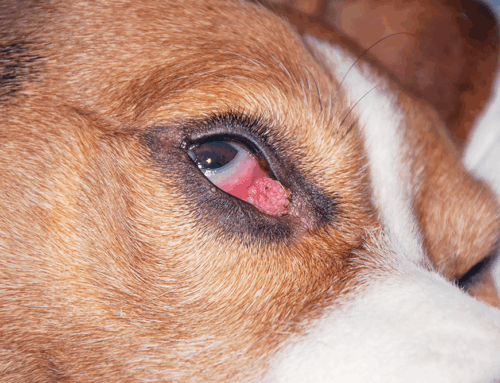
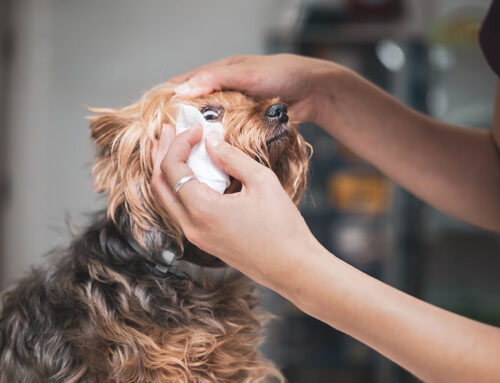
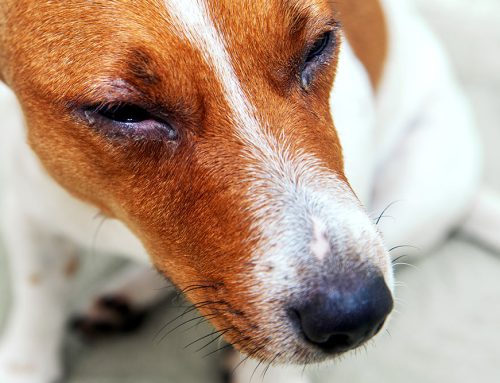

Leave A Comment